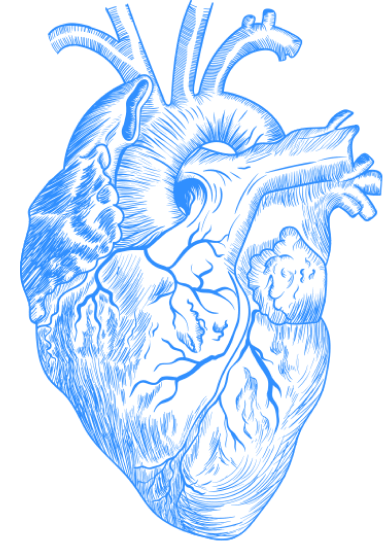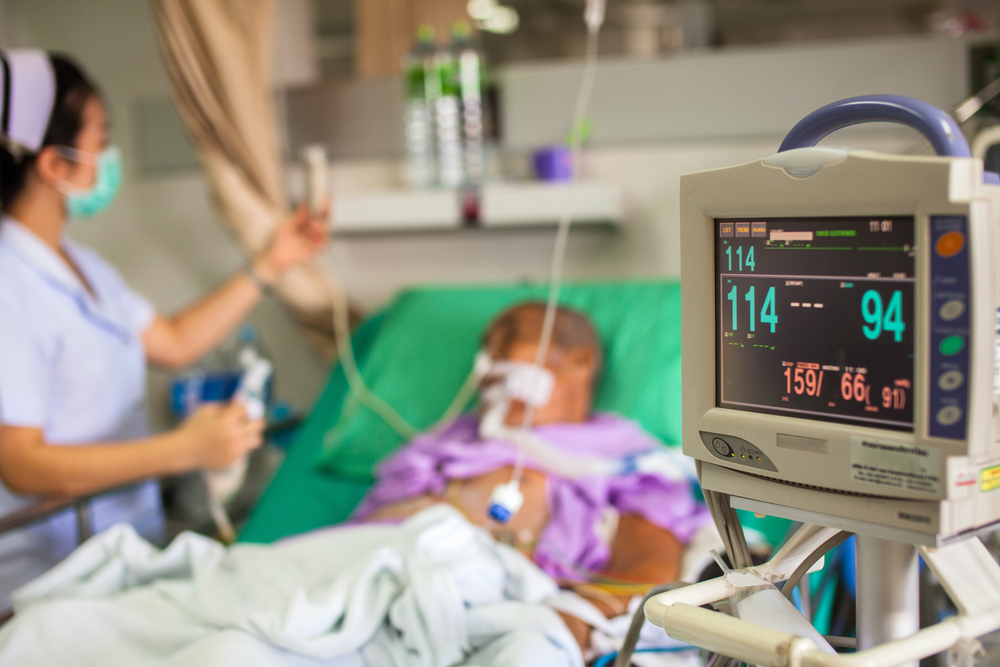
I have a rendezvous with Death At some disputed barricade, When Spring comes back with rustling shade And apple-blossoms fill the air— I have a rendezvous with Death When Spring brings back blue days and fair.
It may be he shall take my hand And lead me into his dark land And close my eyes and quench my breath— It may be I shall pass him still. I have a rendezvous with Death On some scarred slope of battered hill, When Spring comes round again this year And the first meadow-flowers appear.
God knows ’twere better to be deep Pillowed in silk and scented down, Where Love throbs out in blissful sleep, Pulse nigh to pulse, and breath to breath, Where hushed awakenings are dear … But I’ve a rendezvous with Death At midnight in some flaming town, When Spring trips north again this year, And I to my pledged word am true, I shall not fail that rendezvous.
—Alan Seeger, I Have a Rendezvous with Death
The Intensive Care Unit is an uncomfortable place. It is where the sickest patients in the hospital reside. Because many of the patients require emergency medical interventions or close monitoring, the layout resembles that of the emergency department (ED). Patient rooms encircle a nurse’s station where computers sit on a long table. As in the ED, each room is filled with machines projecting vital signs, EKG tracings, IV fluid rates, and other information towards the physicians and nurses. And the nurses in “the unit” (as it’s commonly referred to) are always active, checking in on patients throughout the day and night.
There are many different types of intensive care units: some for patients with heart issues (cardiac ICU), others for patients with neurological issues (neuro ICU), pulmonary or general medical issues (medical ICU), surgical issues (surgical ICU) and cancers (oncology ICU). What we see in each unit, however, is equally disturbing. And what follows are the some of the things one might see (and which I have seen) in different ICUs over the course of a day.
 |
| Image via Shutterstock |
In the neuro critical care unit, one patient lies unconscious with a massive and deadly brain bleed. In another bed across the room, a patient with a rapidly expanding brain tumor cries out in searing pain from a headache. In the cardiac intensive care unit, a patient, hours after receiving a ventricular assist device (VAD), a device which helps the heart’s ventricles pump out blood after being weakened by disease, receives chest compressions from a nurse as he goes into cardiac arrest. Another unconscious patient in the far corner of the room is on ECMO, or extracorporeal membrane oxygenation, after having massive heart and lung failure. ECMO takes blood out of the venous system, oxygenates it in a machine and then pumps it back into the arterial system, thus bypassing the heart and the lungs. In the normal circulatory system, blood goes from the veins into the right side of the heart and subsequently to the lungs where it is oxygenated, flows to the left side of the heart and is pumped into circulation to nourish the body’s tissues. ECMO temporarily maintains circulation until the patient’s heart and lungs can function on their own.
In the oncology unit, a middle-aged cachetic patient lies face-up in the bed, staring at the ceiling while fungal and bacterial infections cause his blood pressure to drop and heart rate to increase. Despite the medications used to prevent these infections in cancer patients with very low white blood cell counts, sometimes the microbes sneak by. And because chemotherapy used to treat cancer destroys white blood cells, the cancer patient has nothing left with which to fight off the infection. Even the most minor bacterial invasion can be fatal for these patients, as it eventually was for him. Meanwhile, in the next room, another patient had just passed away and her family crowded around her bed sobbing and mourning their loss while holding the expired patient’s hand, hoping for the return of warmth.
Unusual sounds percolate from room to room in these dank areas of the hospital. Most noticeably, IV poles beep constantly as they run out of their fluids or medications. Cardiac monitors sound alarms as patient heart rates dip too low, rise above a normal level, or register abnormal rhythms. Some patients moan and scream, losing all sense of time and of themselves. Or, perhaps they curse and threaten nurses while withdrawing from alcohol. Others vomit and pass gas. Some patients demand the impossible: “get me out of here!” or “leave me alone!” Sometimes patients need to be strapped down to the bed because they pull out their IVs as they wail and moan and thrash about. During the day, minimal light shines into the unit and it is tainted by the sickness and suffering which pollute the air and tint the windows. Foul smells, which I wrote about here, are most potent in the ICU. Many ICU patients, though washed by nurses, have not bathed in weeks. The stench of sweat, stool, and blood permeates the unit when nurses change patients’ diapers, suck accumulating mucous out of patients’ mouths, and clean up blood-stained sheets.
And if you think it’s bad for providers, imagine what patients experience. The ICU must feel like a kind of hell on earth. Sleep is rare when your neighbors expectorate, choke, vomit, and shout, and nurses and physicians constantly wake you up, draw blood from your veins, and examine you to ensure your mind still functions correctly. Some patients can’t eat or drink because they need surgery (it is safer to put patients under anesthesia for surgery when they have not eaten because food will not come up from the stomach and choke the patient or travel into the lungs while they are unconscious) and so they go to bed hungry and thirsty. A patient may even go to sleep not knowing whether he or she will wake in the morning. You may be one of those who has a rendezvous with death tomorrow; you may be one of those who survives; you may hang on by a thread for weeks. Who would ever want to end up in an ICU?
And yet, it is in the ICU that patients receive the most fastidious care. Nurses watch over only one or two patients and thus can keep a close eye on them. Physicians trained in the art of emergency procedures, like intubation, are always around and watchful. Nobody will be more attentive to your medical needs than an ICU team, which monitors every sign of life you emit: breaths, heartbeats, skin color, blood pressure, electrolyte levels, blood counts, infectious disease cultures from your urine to your spinal fluid. The advantage of being in the ICU is that you receive the care that you need even if it is in a frightening environment. I hope I never have to be there, but if I am severely ill at some point in my life, the ICU is the place I would choose to be.


I just experienced a couple of days in a cardiac ICU at Sutter Memorial here in Sacramento. Although stressful, as you note, my nurses were excellent, and I always felt I was in good hands. We even shared a couple of good laughs while dealing together with some of the more ridiculous situations such a situation inevitably gives rise to.